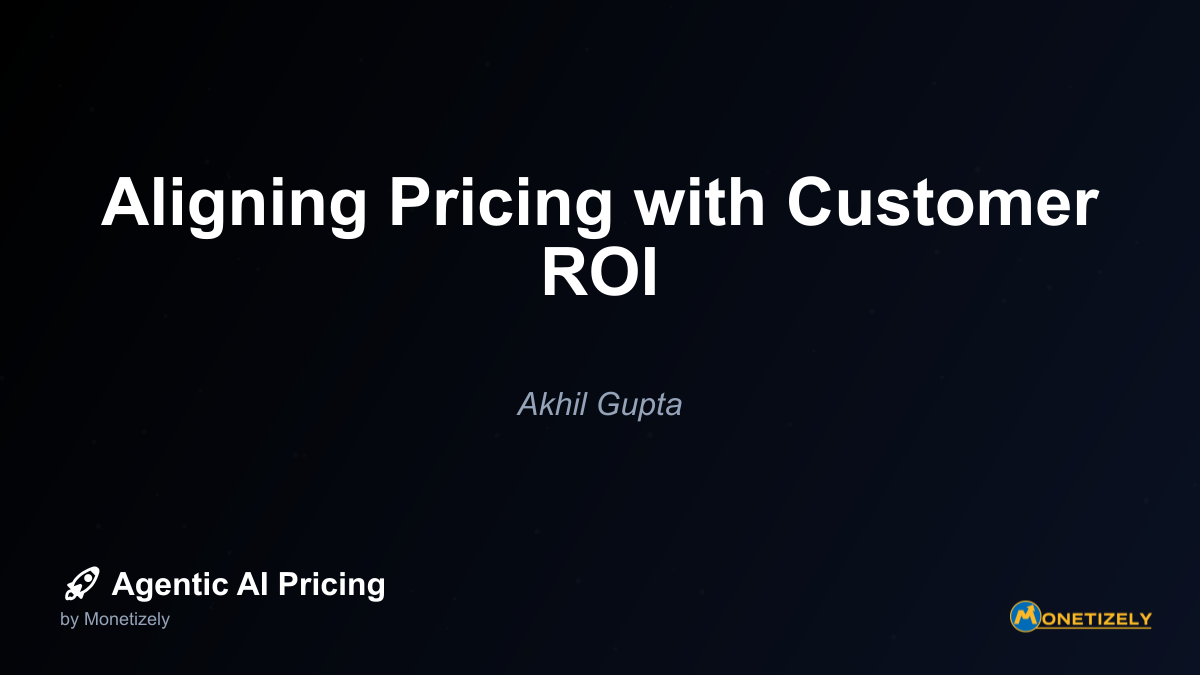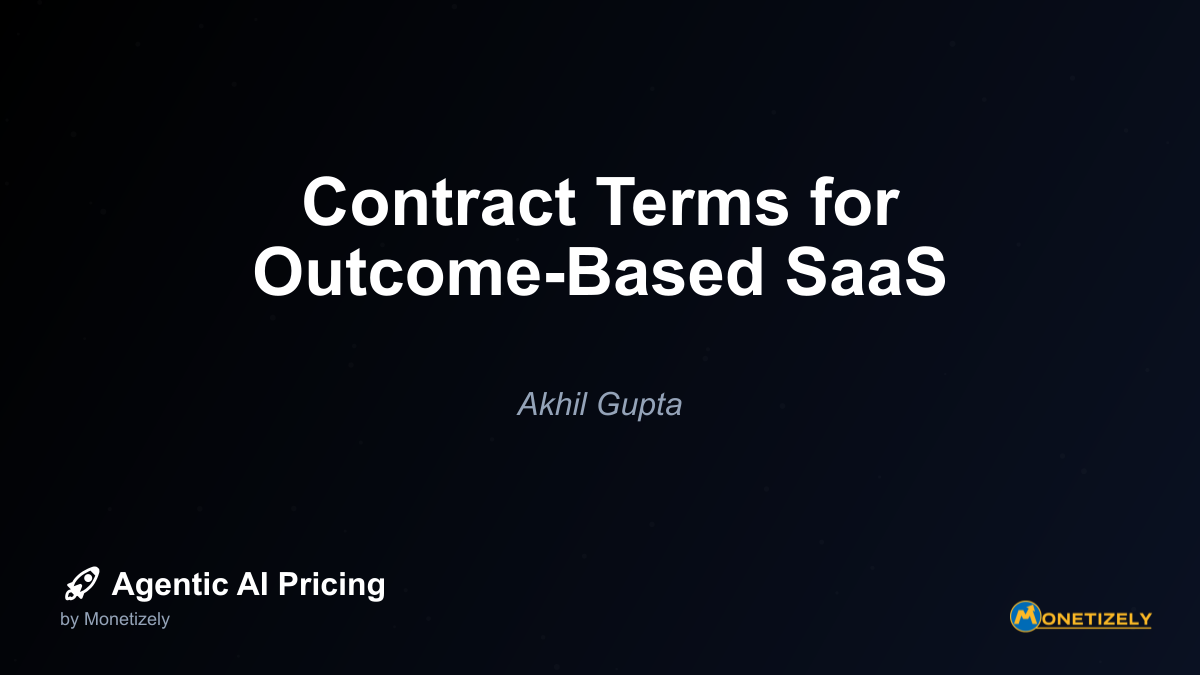· Akhil Gupta · Pricing Agentic SaaS Products · 7 min read
Per-Agent Seat Licensing Pitfalls
AI and SaaS Pricing Masterclass
Learn the art of strategic pricing directly from industry experts. Our comprehensive course provides frameworks and methodologies for optimizing your pricing strategy in the evolving AI landscape. Earn a professional certification that can be imported directly to your LinkedIn profile.

Unlike human employees who consume relatively consistent resources (office space, equipment, benefits), AI agents can have wildly varying resource requirements depending on:
Computational intensity: An AI agent performing simple data validation might use minimal computing resources, while one conducting real-time video analysis could require exponentially more processing power.
Storage requirements: Agents working with large datasets may need substantial storage resources that aren’t reflected in a simple per-seat model.
API call frequency: Many AI agents rely on external services and APIs, each with its own cost structure. Two seemingly identical “seats” could generate vastly different infrastructure costs.
Training and fine-tuning needs: Some AI agents require continuous retraining and model refinement, creating ongoing costs that far exceed those of agents that remain relatively static.
This resource consumption mismatch creates a significant risk: vendors may price themselves into unprofitability by charging the same amount for “lightweight” and “heavyweight” agents. Alternatively, they might set prices high enough to cover worst-case scenarios, making their offering uncompetitive for customers with simpler needs.
Value Perception and Monetization Misalignment
Per-seat licensing also creates challenges around value perception. In traditional software, the value derived from each human user is relatively consistent and primarily limited by human capabilities. With AI agents, the value can vary dramatically based on:
Task Criticality
An AI agent automating mission-critical functions (like fraud detection for financial transactions) delivers substantially more value than one handling routine administrative tasks, yet a per-seat model would price them identically.
Domain Complexity
Agents operating in complex domains with specialized knowledge (legal, medical, engineering) typically deliver higher value than those in more generalized roles, yet seat-based pricing doesn’t account for this distinction.
Integration Depth
The value of AI agents often compounds when they’re deeply integrated with multiple systems and workflows. Two customers might deploy the same number of “seats” but realize vastly different value depending on how thoroughly they’ve integrated the agents into their operations.
As a result, customers with high-value use cases may feel they’re getting a bargain, while those with simpler applications may perceive the same pricing as excessive—creating an unstable dynamic that can lead to customer segmentation problems and missed revenue opportunities.
Operational and Technical Complications
Beyond the conceptual misalignments, per-agent seat licensing introduces several practical complications that can frustrate both vendors and customers:
Definition Ambiguity
What exactly constitutes an “agent seat” can become surprisingly contentious. Is it:
- A single AI instance regardless of capabilities?
- An agent with a specific skill set or role?
- A particular level of computational resources allocated?
Without clear definitions, customers may attempt to maximize value by creating “super agents” that combine multiple functions into a single billable unit, while vendors may respond with increasingly complex licensing terms to prevent this.
Deployment Flexibility Constraints
Organizations often need to experiment with different agent configurations and deployment patterns to optimize their operations. Per-seat licensing can severely restrict this flexibility by creating financial penalties for experimentation.
“Companies need the freedom to deploy, test, and redeploy agents without worrying about licensing implications,” notes Jamie Chen, CTO of AI Operations Platform Synthetix. “Per-seat models force customers to commit to specific agent architectures prematurely, often resulting in suboptimal implementations.”
Monitoring and Compliance Overhead
Tracking and auditing agent deployment becomes a significant overhead for both parties. Vendors must implement monitoring systems to ensure customers don’t exceed their licensed seats, while customers must maintain accurate records to avoid compliance issues.
This administrative burden can become particularly onerous in dynamic environments where agents are frequently created, modified, or decommissioned based on changing business needs.
The Customer Experience Impact
Perhaps the most insidious pitfall of per-agent seat licensing is its potential to negatively impact customer experience and satisfaction:
Artificial Constraints on Value Realization
Customers may hesitate to deploy additional agents even when they would deliver clear ROI, simply because crossing a seat threshold triggers additional costs. This artificial constraint prevents customers from realizing the full potential value of the platform.
Budget Predictability Challenges
While per-seat licensing appears predictable on the surface, the reality can be quite different. As organizations discover new use cases and applications for AI agents, they may experience unexpected licensing cost spikes that weren’t budgeted for, creating friction in the customer relationship.
Competitive Vulnerability
As the agentic AI market matures, competitors offering more aligned pricing models (such as usage-based or outcome-based pricing) may be able to highlight the inefficiencies of per-seat licensing to win customers away from established vendors.
Alternative Pricing Approaches for Agentic AI
Given these significant pitfalls, what alternatives should companies consider when pricing their agentic AI offerings?
Usage-Based Pricing Models
Usage-based pricing models align costs directly with resource consumption and value creation. Rather than charging per agent, companies can price based on:
- Compute time or processing units consumed
- Number of tasks completed or workflows executed
- Data volume processed or analyzed
- API calls or transactions handled
This approach creates a much tighter correlation between price and both cost and value, eliminating many of the misalignments inherent in per-seat models.
“The most successful AI pricing models we’ve seen create a direct link between consumption and value,” explains Dr. Alisha Patel, AI Economics Professor at Stanford. “When customers pay for what they use rather than arbitrary ‘seats,’ both sides win—vendors capture fair value for resource-intensive operations, and customers only pay for what delivers actual business results.”
Outcome-Based Pricing
For some agentic AI applications, outcome-based pricing represents the ultimate alignment between vendor and customer interests. This model ties costs directly to measurable business outcomes, such as:
- Cost savings achieved
- Revenue generated
- Productivity improvements
- Error reduction percentages
While more complex to implement, outcome-based pricing eliminates virtually all of the misalignments present in per-seat models by directly tying costs to value realization.
Hybrid Approaches
Many successful agentic AI vendors are implementing hybrid pricing models that combine elements of different approaches:
- Base subscription fee + usage-based components
- Tiered pricing based on capability levels with usage components
- Outcome-based pricing with minimum commitments
These hybrid models can provide the predictability that finance departments appreciate while still maintaining the alignment benefits of more consumption-oriented approaches.
Implementation Strategies for Transitioning Away from Per-Seat Models
For companies currently using per-seat licensing for their agentic AI offerings, transitioning to more aligned pricing models requires careful planning:
1. Conduct Customer Value Analysis
Before making any pricing changes, thoroughly analyze how different customer segments derive value from your AI agents. Identify patterns in resource consumption, use cases, and outcomes to inform your new pricing structure.
2. Develop Clear Metrics and Monitoring
Establish transparent, easily understood metrics that will form the basis of your new pricing model. Ensure you have robust monitoring systems in place to track these metrics accurately.
3. Create Migration Paths
Design thoughtful migration paths that allow existing customers to transition gradually to the new pricing model. Consider grandfathering certain customers or offering dual-pricing options during a transition period.
4. Educate Sales and Customer Success Teams
Your customer-facing teams will need comprehensive training on the new pricing model, including how to communicate its benefits and address potential objections from customers.
5. Test with New Customers First
Consider implementing the new pricing model with new customers initially, allowing you to refine your approach before migrating your existing customer base.
Navigating Internal Resistance to Pricing Model Changes
Changing pricing models often faces internal resistance, particularly from sales teams comfortable with existing approaches. To overcome this resistance:
Align Incentives
Ensure sales compensation plans reward the transition to new pricing models. Consider temporary incentives that make selling the new model more attractive during the transition period.
Provide Competitive Intelligence
Equip sales teams with competitive intelligence showing how alternative pricing models are becoming industry standards and how they benefit both customers and vendors.
Create Clear Messaging
Develop straightforward messaging that explains the value of the new pricing approach in terms of fairness, alignment, and customer success.
Share Success Stories
As early adopters experience success with the new pricing model, document and share these success stories internally to build confidence in the approach.
Conclusion
Per-agent seat licensing, while familiar and seemingly straightforward, introduces significant pitfalls when applied to agentic AI systems. The fundamental differences between human and AI workers, resource consumption mismatches, value perception challenges, and operational complications all undermine the effectiveness of this pricing approach.
Forward-thinking companies are recognizing these limitations and transitioning to more aligned models based on usage, outcomes, or hybrid approaches. These alternative pricing strategies create stronger alignment between costs and value, ultimately leading to healthier vendor-customer relationships and more sustainable business models.
As the agentic AI market continues to mature, pricing innovation will become an increasingly important competitive differentiator. Companies that recognize the limitations of traditional per-seat licensing and embrace more aligned approaches will be better positioned to capture their fair share of value while helping customers maximize their return on AI investments.
The transition away from per-seat models isn’t merely a pricing decision—it’s a strategic imperative for companies serious about building sustainable agentic AI businesses in an increasingly competitive landscape.
Co-Founder & COO
Akhil is an Engineering leader with over 16+ years of experience in building, managing and scaling web-scale, high throughput enterprise applications and teams. He has worked with and led technology teams at FabAlley, BuildSupply and Healthians. He is a graduate from Delhi College of Engineering and UC Berkeley certified CTO.
Pricing Strategy Audit
Let our experts analyze your current pricing strategy and identify opportunities for improvement. Our data-driven assessment will help you unlock untapped revenue potential and optimize your AI pricing approach.




